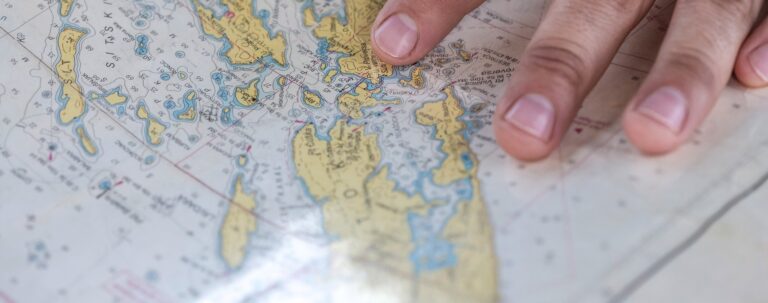Sailing in Colombia: from Puerto Velero to Cartagena
Sailing from Aruba to Puerto Velero (Colombia) was described in the previous post.
Formalities
Before leaving Puerto Velero to Cartagena, you should obtain an exit ZARPE (10USD$ at the marina) and have all your paperwork ready. This requirement refers to any port when sailing between districts in Colombia. You should also hire an agent in Cartagena. Usually, marinas will recommend one. If your boat is already imported and you are checked-in in Colombia, an agent would cost around 190k COP (2022).
Sailing

Season: December to February
The coast, especially the Sierra Nevada de Santa Marta, between December and February, produces a heavy 30+kn night breeze around Barranquilla (river Magdalena), extending west, along the coast. Winds are weakening during the day but rarely below 20kn.
It is good to wait for a good weather window. Check forecasts for wind gusts rather than for permanent wind, check also wave height and swell direction. Gusts are coming from a clear sky and accelerate fast.
- Sailing from Puerto Velero, you should consider sailing off the coast. Coastal waters are shallow 10-20m deep, and swell plus wind waves tend to be high and short even in considerably low wind 15-20kn. Good to consider swell direction during the planning and setting waypoints. After a few rogue waves and flooding the cockpit, we had to change the tactics and sail NNW for 2-3NM (purple dot), against the waves, to be able to sail along the coast on a run. We hit the waves of 2-3m in 20kn of wind, and we considered those conditions a good weather window, waiting for it for about 2 weeks.
- Between Punta de la Garita and Punta Santa Rita (marked yellow), there are shallows 5-10m where waves became more regular, but steeper, with noticeable shallow water effect of sucking back and stopping the boat. I wouldn’t be the happy puppy to go there in high seas (a little bit of engine reduces that effect).
- After Punta Santa Rita, water gets deeper, and the effect quickly disappears.
- It is easy to enter the Bay of Cartagena via Boca Grande (4), the northern entrance with the underwater wall built by the Spanish in XVIII century, but you have to stick to the green and red buoys marking the passage, which is only 60 m wide. The lowest depth we marked was 3.6m in the high tide. Make sure to approach the entrance perpendicularly to avoid shallows.
- Bay is very busy during the day, keep your sails up as long as you can, at least you’ll be seen 🙂
Cartagena Port Control
If you are sailing with AIS on, port control will call you via AIS, if not – you need to contact port control Cartagena (station San Jose) – on VHF16 before entering via Boca Grande. They request name of your agent, Zarpe (via Whatsapp) and destination. They said that we should expect someone upon arrival, but we arrived here five days ago and haven’t seen a person since








